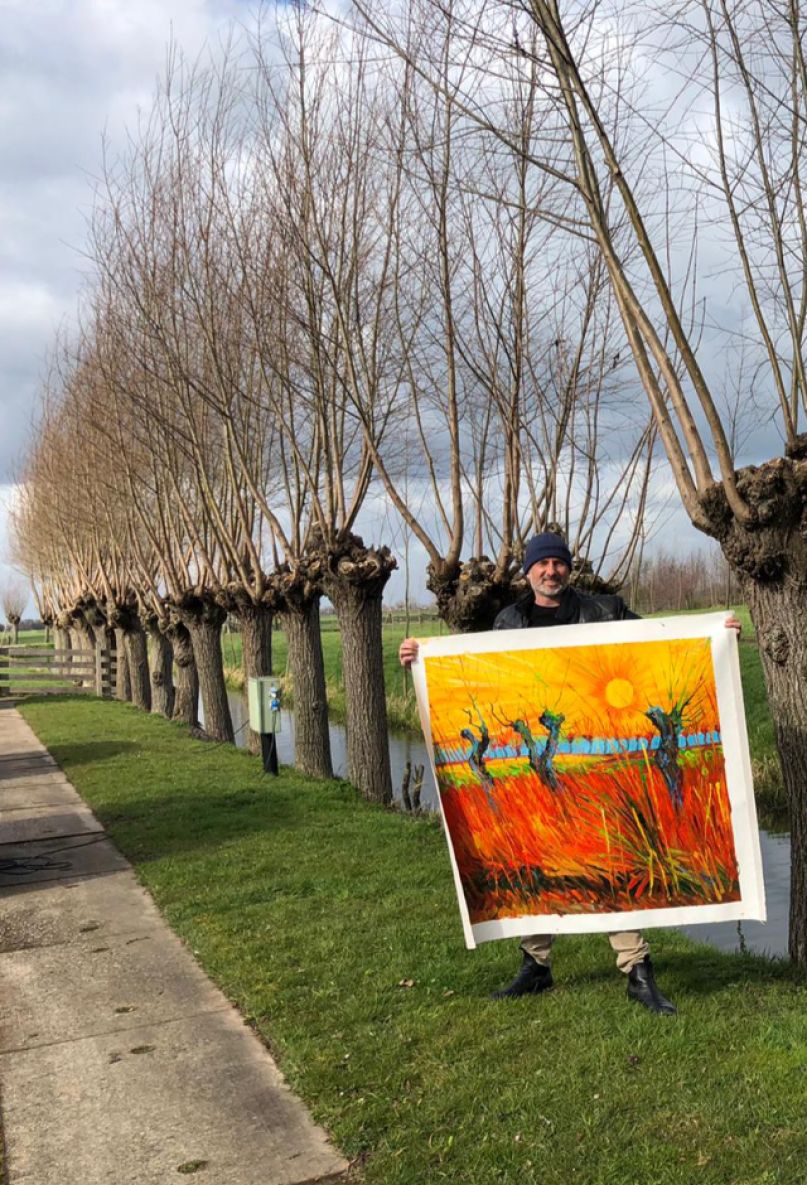-
Why did Van Gogh like cypresses so much?
When Van Gogh moved from Paris to the South of France in 1888 he was not only inspired by brighter and warmer colors. There were mountains. The typical blue of the Mediterranean Sea. And different trees. Van Gogh was especially intrigued by olive trees and cypresses. A few of Vincent’s letters reveil why he loved cypresses.
On 25 June 1889 in Saint-Rémy-de-Provence he wrote to his brother Theo:
"The cypresses still preoccupy me, I’d like to do something with them like the canvases of the sunflowers because it astonishes me that no one has yet done them as I see them. It’s beautiful as regards lines and proportions, like an Egyptian obelisk. And the green has such a distinguished quality."
In the same letter Vincent wrote about the color of a cypress:
"It’s the dark patch in a sun-drenched landscape, but it’s one of the most interesting dark notes, the most difficult to hit off exactly that I can imagine. Now they must be seen here against the blue, in the blue, rather.”
On 26 November 1889 het wrote to Theo:
You know that willows are very picturesque, despite the fact that it appears monotonous, it’s the tree typical of the country. Now what the willow is in our native country, the olive tree and the cypress have exactly the same importance here.
Find out in your FREE Van Gogh e-book.
Hundreds of questions answered by Van Gogh himself!
On 25 June 1889 in Saint-Rémy-de-Provence he wrote to his brother Theo:
"The cypresses still preoccupy me, I’d like to do something with them like the canvases of the sunflowers because it astonishes me that no one has yet done them as I see them. It’s beautiful as regards lines and proportions, like an Egyptian obelisk. And the green has such a distinguished quality."
Cypresses like obelisks.
The comparison of an obelisk may have come up to Van Gogh when he remembered ‘Obelisk in memory of 1813’, a statue in Scheveningen. Van Gogh (born in 1853) lived and worked for an art dealer in The Hague from 1869 -1873. And he lived and painted in The Hague from 1882-1883. From there Scheveningen was just a short trip.In the same letter Vincent wrote about the color of a cypress:
"It’s the dark patch in a sun-drenched landscape, but it’s one of the most interesting dark notes, the most difficult to hit off exactly that I can imagine. Now they must be seen here against the blue, in the blue, rather.”
Famous Van Gogh paintings with cypresses
Some of Van Gogh’s most famous paintings show cypresses, for example Starry Night, Wheat Field with Cypresses, Road with cypress and Star and Cypresses.The French cypress is like the Dutch willow.
Van Gogh noticed that cypresses were rarely painted, but just like willows in The Netherlands they deserved more attention.On 26 November 1889 het wrote to Theo:
You know that willows are very picturesque, despite the fact that it appears monotonous, it’s the tree typical of the country. Now what the willow is in our native country, the olive tree and the cypress have exactly the same importance here.
Your Daily Dose of Van Gogh
What did Vincent van Gogh write on this day?Find out in your FREE Van Gogh e-book.
Hundreds of questions answered by Van Gogh himself!
The overwhelming Cypress
The intensity Van Gogh experienced by painting cypresses can be felt in the letter he wrote to Aurier (the French poet, art critic and painter) in February 1890:“In my case the emotions that take hold of me in the face of nature go as far as fainting, and then the result is a fortnight during which I am incapable of working. However, before leaving here, I am planning to return to the fray to attack the cypresses."
Order a cypress. Or another Van Gogh reproduction.
Our replicas are hand-painted in oil on canvas by our artists who love painting cypresses as much as Van Gogh did. Check out our reproductions with cypresses, our most popular reproductions, or all Van Gogh reproductions.You may also like to read about Van Gogh's 'Seascape of Scheveningen' that was stolen. And recovered!
 "Well, the day is probably not far off when people will paint the olive tree in every way as they have painted the willow and the Dutch pollard willow." -VvG
"Well, the day is probably not far off when people will paint the olive tree in every way as they have painted the willow and the Dutch pollard willow." -VvG
Comments (2)
Arthur Castagno
- 29-08-2022
Hello, I am trying to find exactly which species of cypress Van Gogh painted. I have loved these trees in his paintings since I was a boy, and now, as an old man, I’d like to see if these are compatible with the local Seattle climate — and if they are, plant a row of them. If you know, could you please let me know? ACastagno A.castagno@frontier.com

Hi Arthur, I checked and this may be interesting: In Derek Fell’s beautiful book, “Van Gogh’s Gardens” (Simon & Schuster, 2001), he proposes that the evergreen cypresses depicted in many of Van Gogh’s paintings aren’t cypresses at all, but junipers. https://eu.providencejournal.com/story/entertainment/arts/2015/01/11/20150111-book-suggests-that-van-gogh-painted-juniper-not-cypress-trees-ece/35287854007/